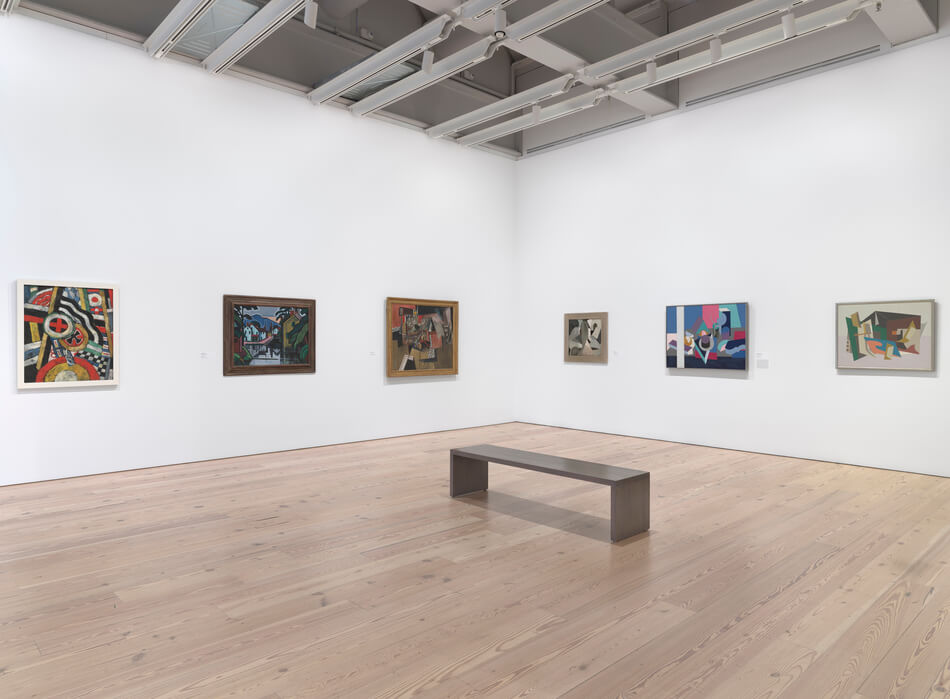Art | November 22, 2022 |

At the Dawn of a New Age: Early Twentieth-Century American Modernism
Whitney Museum of American Art, New York
May 07, 20022 – February 26, 2023
The Whitney Museum of American Art presents At the Dawn of a New Age: Early Twentieth-Century American Modernism, an exhibition of over sixty works by more than forty-five artists that highlights the complexity of American art produced between 1900 and 1930. The exhibition showcases how American artists responded to the realities of a rapidly modernizing period through an array of abstract styles and media. At the Dawn of a New Age features artworks drawn primarily from Whitney’s collection, including new acquisitions and works that have not been on view at the Museum for decades. The exhibition provides a broader perspective on early twentieth-century American modernism by including well-known artists like Marsden Hartley, Oscar Bluemner, Elie Nadelman, Charles Burchfield, Aaron Douglas, and Georgia O’Keeffe, as well as groundbreaking, historically overlooked artists like Henrietta Shore, Charles Duncan, Yun Gee, Manierre Dawson, Blanche Lazzell, Ben Benn, Isami Doi, and Albert Bloch.

At the Dawn of a New Age: Early Twentieth-Century American Modernism is organized by Whitney Curator Barbara Haskell and is on view in the Museum’s eighth-floor Hurst Family galleries from May 7, 2022, to March 2023. America’s early modernists came of age in a period marked by change and innovation. The onset of the twentieth century saw technological advancements combined with cultural shifts, including women’s suffrage and progressive political initiatives, that challenged existing social and economic norms. Against this backdrop of optimism in progress and modernity, many American artists embraced the new and experimental over the traditional and fixed by rejecting realism in favor of art that prioritized emotional experience and harmonious design.

“In the Whitney’s early days, the Museum favored realism over abstract styles,” said Curator Barbara Haskell. “It wasn’t until the mid-1970s that the Museum expanded its focus and began acquiring nonrepresentational works from the period. Gaps remain, but the Museum’s holdings of early twentieth-century modernism now rank among the collection’s strengths. By bringing together familiar icons, works that have been in storage for decades, and new acquisitions, At the Dawn of a New Age gives us an opportunity to reassess how we tell the story of this period of American art and celebrate its complexity and spirit of innovation.”

“At the Dawn of a New Age provides an opportunity to reconsider and expand interpretations of American modernism in the early 1900s through the unique lens of the Whitney’s collection,” said Jane Panetta, the Whitney’s Nancy and Fred Poses Curator and Director of the Collection. “This show presents an exciting moment for us to feature new acquisitions from pioneering artists of that time, some of whom recently entered the Whitney’s collection for the first time. We’re thrilled to bring these works into the collection as we begin to address how the Whitney can continue to build upon our important holdings from this period.”

At the Dawn of a New Age features paintings, drawings, sculptures, prints, photographs, and woodcuts, revealing the variety of styles and media that artists used to express their experiences of modern life. Early explorations from well-known modernists, such as Georgia O’Keeffe’s Music, Pink and Blue No. 2 (1918) and Marsden Hartley’s Forms Abstracted (1914), are presented alongside works by previously overlooked figures, in particular women and artists of color, that are critical to expanding the Museum’s representation of this period. From the flat, stylized geometries of Aaron Douglas and Isami Doi to the simplified organic abstractions of Henrietta Shore and Agnes Pelton and the Symbolist landscapes of Pamela Colman Smith and Albert Bloch, the artists featured in the exhibition channeled vanguard European art styles into a distinctly American brand of modernism.

The exhibition presents a host of works on view for the first time in decades, including Albert Bloch’s expressionist landscape Mountain (1916), Yun Gee’s Chinatown cityscape Street Scene (1926), and Walter Pach’s Cubist tableau Untitled (Cubist Still Life),1914. Recent acquisitions featured in At the Dawn of a New Age include Isami Doi’s scenic linocut Moonlight (1924); Adele Watson’s coastal outcropping Untitled (Mountain Island Monk), 1931; Henrietta Shore’s nature abstraction Trail of Life (1923); and Aaron Douglas’s suite of Emperor Jones woodcuts. These works demonstrate the innovation and experimentation of early twentieth-century modernism and emphasize the capacity of abstraction to reflect individual responses to the changing period and the collective, groundbreaking spirit of the age.
more. www.whitney.org

